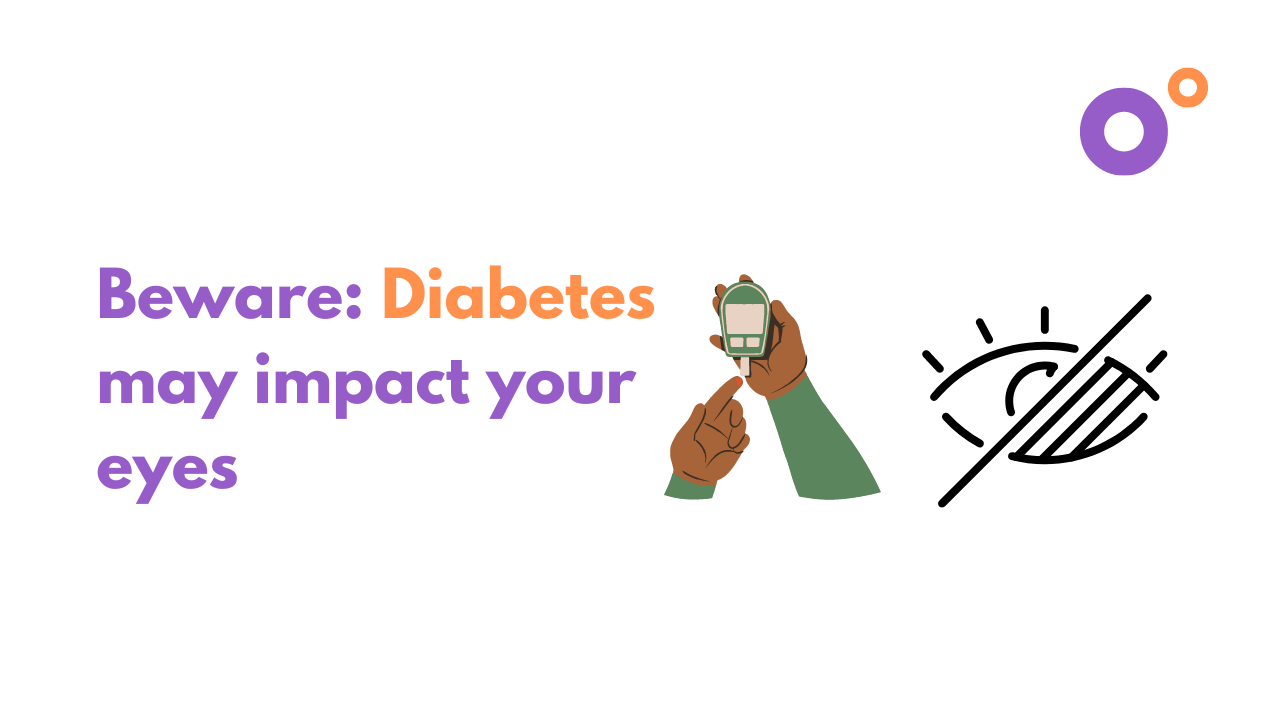
Beware: Diabetes may impact your eyes
Medically reviewed by
Dr .Peeyush Tiwari MBBS, MS - Ophthalmology Ophthalmologist/Eye Surgeon
Diabetes affects the eyes when the blood glucose, also called blood sugar, is too high or mismanaged. This changes fluid levels or causes swelling in the eye tissues which help in focusing, causing blurred vision. This type of blurry vision is temporary and goes away when your glucose level gets closer to normal.
But if the blood glucose stays high over time, it can damage the tiny blood vessels in the back of the eyes. This damage can begin during pre-diabetes, when blood glucose is higher than normal. The damaged blood vessels may leak fluid and cause swelling. New, weak blood vessels may also begin to grow. These blood vessels can bleed into the middle part of the eye, lead to scarring or cause dangerously high pressure inside the eye.
The four diabetic eye diseases
that can threaten your sight are diabetic retinopathy, diabetic macular edema, cataracts and glaucoma.Diabetic retinopathy —
the retina is the inner lining at the back of each eye which senses light and turns it into signals which the brain decodes, so one can see the world. Damaged blood vessels can harm the retina, causing a disease called diabetic retinopathy.Diabetic macular edema —
the part of retina which is needed for reading, driving and seeing faces is called the macula. Diabetes can lead to swelling in the macula, which is called diabetic macular edema. Over time, this disease can destroy the sharp vision in this part of the eye, leading to partial vision loss or blindness. Macular edema usually develops in people who already have diabetic retinopathy.Glaucoma —
is a group of eye diseases which damage the optic nerve—the bundle of nerves that connects the eye to the brain. Diabetes doubles the chances of having glaucoma, which can lead to vision loss and blindness if not treated early. People with glaucoma slowly lose side vision.Cataracts —
the lenses within our eyes are clear structures that help provide sharp vision—but they become cloudy as we age. People with diabetes are more likely to develop cloudy lenses called cataracts at an earlier age. Cloudy vision and faded colors are symptoms of cataracts.Symptoms of diabetic eye disease
● blurry or wavy vision
● frequently changing vision—sometimes from day to day
● dark areas or vision loss
● poor color vision
● spots or dark strings (also called floaters)
● flashes of light
Talk with Ophthalmologist at FirstCure Health if you have any of these symptoms.
Prevention of diabetic eye disease
People can take a number of steps to prevent diabetic eye disease or keep it from getting worse:● Manage your blood glucose, BP and cholesterol, sometimes called the diabetes ABCs
● If you smoke, quit
● Have a dilated eye exam once a year which helps the optometrist at FirstCure Health detect this eye problem—often before much vision loss can occur.
● Exercise is a must.
● Take prescribed eye drops regularly to reduce high eye pressure.
● Wear eye protection.
It’s never too late to begin to manage diabetes and protecting your eyes for the future.